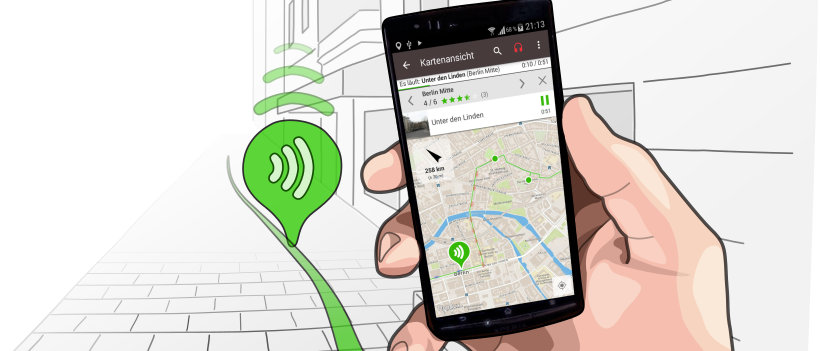We want to start our tour at one of the oldest places in Cologne.
First, I would like to give you a brief outline of the history of Cologne.
From the Romans to the Shrine of the Three Kings
Agrippina the Younger is said to have asked her husband Emperor Claudius in 50 AD to make Cologne a Roman colony. After Germanic tribes repeatedly invaded Cologne in the 4th and 5th centuries, Cologne finally became part of the Frankish Empire in 455. Charlemagne then made Cologne an archbishopric in 795.
From 983 to 991, Theophanu, the mother of Emperor Otto III, ruled from Cologne. After her death, she was buried in St. Pantaleon.
Two archbishops made headlines in the following years:
Archbishop Anno had to defend himself against the citizens of Cologne around Easter 1074, but was able to defeat them a few days later. In 1164, Archbishop Rainald von Dassel brought the supposed bones of the Three Kings to Cologne, ensuring that from 1248 onwards they were given a stately place of worship, the Cologne Cathedral.
From battles to the Free Imperial City
Until the 14th century, Cologne again had no peace due to battles. In 1268, it was the Overstolzen, a patrician family, who sought to conquer Archbishop Engelbert II of Falkenburg. In 1268, it was the citizens of Cologne who turned against Archbishop Siegfried of Westerburg in the Battle of Worringen.
From 1396 onwards, guilds of craftsmen were included in the city council, and this was regulated in the so-called Gaffel Constitution.
From 1475, Cologne was a free imperial city thanks to Emperor Frederick III. From then on, Cologne was subject only to the emperor and no other secular or spiritual ruler.
From Reformation to Adenauer
Cologne successfully fended off reformation efforts in the 16th century and, together with the Jesuits, was even a strong advocate of the Counter-Reformation.
Through clever neutral politics, Cologne was able to avoid being occupied during the Thirty Years’ War.
The invasion of the French in 1794 was both a blessing and a curse for Cologne. On the one hand, church and cultural assets were confiscated and destroyed. On the other hand, the French also ensured cleanliness and order, e.g. with the stringent numbering of streets. With Napoleon’s invasion in 1804, the Code Civil was introduced in Cologne, which was the legal basis for the following 10 years of occupation.
After the victory over Napoleon, the Rhineland and thus Cologne fell to Prussia. Not least, this led to bitter disputes between Catholics and Protestants in the years that followed, also known as the Kulturkampf from 1871-1878.
After around 330 years of construction interruption, Cologne Cathedral was finally ceremoniously inaugurated by Emperor Wilhelm I in 1880.
With the demolition (demolition) of the medieval city wall in 1881, new residential and industrial sites were created around Cologne.
A great man of this city, Konrad Adenauer, took over as mayor in 1917. However, he was removed from his post in 1933 when the Nazis seized power.
Cologne during the 2 World Wars
As a result of the defeat in the First World War, Cologne was occupied by British troops from 1918-1926.
On March 7, 1936, the Wehrmacht symbolically marched over the Rhine bridge into the demilitarized Rhineland, thus the German Reich breaking the Treaty of Versailles.
From 1940 onwards, Jews as well as Sinti and Roma were systematically deported from Cologne. On May 31, 1942, the Allies began bombing Cologne. By the end of the war, around 80% of the city was destroyed. Miraculously, Cologne Cathedral survived the bombings largely unscathed. On April 12, 1945, American troops marched into Cologne, followed by the British as occupying forces on June 21.
From reconstruction to the new Rheinauhafen
Immediately after the war, Cologne began reconstruction. The aim was to restore the infrastructure as far as possible, preserve the historical substance if possible, and promote car traffic. Many residential buildings also had to be built quickly in the center, although often without preserving the historical building substance.
After years of restoration, Cologne Cathedral was finally able to reopen in 1956.
While the championship title for 1. FC Cologne in May 1962 was a nice event, a sad chapter in Cologne’s city history was written in September 1978 with the kidnapping and later murder of the employers’ president Hanns Martin Schleyer by the RAF.
In 1980 and 2005, two popes visited Cologne, first John Paul II in 1980 and then Benedict XVI for World Youth Day in 2005.
In 2012, the renovation work on the Rheinauhafen was completed and it can now be used for strolling, enjoying and living in the new, modern and listed ambience.
Image source: CCAA: Marking on the Roman North Gate, by Anonymous - Scan / Cutout and optimized from illustration by HOWI, public domain, https://commons.wikimedia.org/w/index.php?curid=2361170



